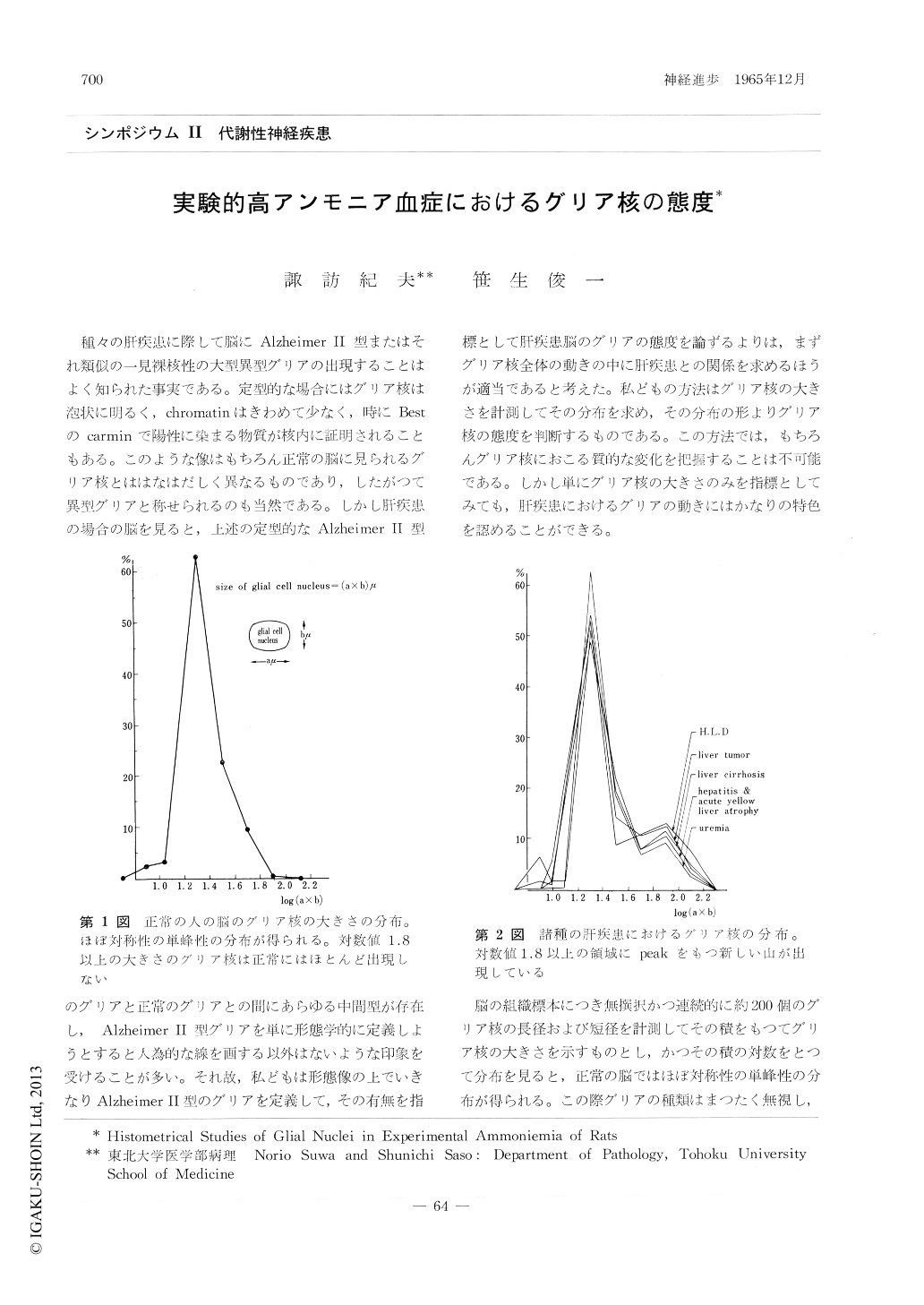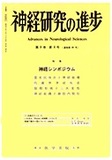Japanese
English
- 有料閲覧
- Abstract 文献概要
- 1ページ目 Look Inside
種々の肝疾患に際して脳にAlzheimer II型またはそれ類似の一見裸核性の大型異型グリアの出現することはよく知られた事実である。定型的な場合にはグリア核は泡状に明るく,chromatinはきわめて少なく,時にBestのcarminで陽性に染まる物質が核内に証明されることもある。このような像はもちろん正常の脳に見られるグリア核とははなはだしく異なるものであり,したがつて異型グリアと称せられるのも当然である。しかし肝疾患の場合の脳を見ると,上述の定型的なAlzheimer II型のグリアと正常のグリアとの間にあらゆる中間型が存在し,Alzheimer II型グリアを単に形態学的に定義しようとすると人為的な線を画する以外はないような印象を受けることが多い。それ故,私どもは形態像の上でいきなりAlzheimer II型のグリアを定義して,その有無を指標として肝疾患脳のグリアの態度を論ずるよりは,まずグリア核全体の動きの中に肝疾患との関係を求めるほうが適当であると考えた。私どもの方法はグリア核の大きさを計測してその分布を求め,その分布の形よりグリア核の態度を判断するものである。この方法では,もちろんグリア核におこる質的な変化を把握することは不可能である。しかし単にグリア核の大きさのみを指標としてみても,肝疾患におけるグリアの動きにはかなりの特色を認めることができる。
Glial nuclei of human autopsy cases with liverdiseases were histometrically examined to evaluatetheir transformations to those of Alzheimer II typequantitatively. In normal brains logarithms of theproduct of the larger and lesser diameters of glialnuclei, when determined successively in randomlyselected areas irrespective of their histologicalclassifications, constituted a nearly symmetricalfrequency distribution with a single peak. In liverdiseases glial distribution was characterized bydistinct extension of its upper extremity withanother independent peak, due to appearance ofabnormally large nuclei beyond 7×8μ2 .This was most conspicuously observed in cases with hepato-cerebral disorders and liver cirrhosis. The sametendency, though less remarkable in its expression, could be confirmed in the majority of other liver diseases and likewise in cases with uremia. The result suggested that some metabolites, of which ammonia was regarded to be the most important, were responsible for the glial transformation inthese diseases. Experimental ammoniemia couldeffectively be induced in rats by peroral NH4C1administration or by intraperitoneal injection ofurease preparations to liberate ammonia fromendogenous urea. The frequency distribution ofglial nuclei of experimental animals perfectlyreproduced the pattern of human liver diseases.The result indicated that diffuse enlargement ofglial nuclei in liver diseases and in associatedconditions could most probobly be attributed to elevated blood ammonia lavel. The specificity of the reaction, however, remained still to be examined.

Copyright © 1965, Igaku-Shoin Ltd. All rights reserved.


